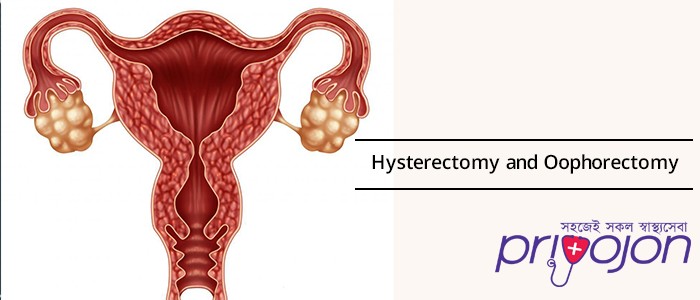
Overview
Medically reviewed by Dr. Rabeya Afroz Shomi
What is the treatment?
How is that the treatment done?
Who is eligible for the treatment?
Who isn't eligible for the treatment?
Are there any side effects?
How long does it fancy recover?
Are the results of the treatment permanent?
What are the alternatives to the treatment?
What is the treatment?
The word 'Hysterectomy' springs from its Greek root 'Hysteria' which suggests the womb and 'Ektomia' implying to chop out of. A Hysterectomy surgery concerns the surgical removal of a woman's uterus. It also can mean the surgical removal of the uterus, ovaries and therefore the cervix. So technically, a Hysterectomy surgery means the lady can never be a biological mother again.
This type of a surgery, which is one among the foremost common gynaecological procedures performed, does become important in certain scenarios. It can either be a complete (removal of the uterus along side the cervix) or a partial (removal of the uterus but not the cervix).
A Hysterectomy surgery are often administered for the subsequent reasons: uterine fibroids (the common non-cancerous growths on the uterus muscles), uterine prolapse (a benign condition wherein the uterus drops into the vagina from its usual spot), endometriosis (a condition characterized by the expansion of the uterus lining tissues outside the uterus), cancer and hyperplasia ( thickening of the uterus lining leading to bleeding).
Other reasons include pelvic pain that's chronic, chronic PID (Pelvic Inflammatory Disease) and heavy, persistent bleeding.
How is that the treatment done?
A Hysterectomy Surgery usually takes about two hours at the utmost . general anaesthesia is run after which, an IV catheter are going to be inserted to provide medications and other fluids.
The process of hysterectomy depends on the sort of the surgery. within the case of abdominal hysterectomy, first, an incision (either transverse or vertical) of about 7 inches is formed within the lower abdomen. The supportive tissues and therefore the blood vessels round the uterus are excised then the uterus is taken out through the incision. Finally, the incision is closed. a serious advantage of this sort is that hysterectomy are often performed albeit there's scarring or presence of huge fibroids. within the case of vaginal hysterectomy, an incision is formed round the top of the woman's vagina. After the ligaments, fallopian tubes and therefore the blood vessels are stop , the uterus is taken out through the vagina. The advantage here is that scarring is minimal with almost no operative pain. The patient can resume normal activities within a month. However, the probabilities of complications are more within the case of a vaginal hysterectomy. within the case of Laparoscopically assisted vaginal Hysterectomy, an equivalent procedure is followed with a laparoscope assisting the doctor.
Who is eligible for the treatment?
The Hysterectomy surgery is opted for less than if other methods haven't been ready to provide results. the foremost common eligibility criteria include:
Heavy periods: Often caused by the presence of fibroids, heavy periods can pose other problems like menstrual cramps, irritability and nausea.
Uterine prolapse: this is often characterized by the uterus dropping into the vagina as a results of the weakening of the supportive ligaments and tissues.
Pelvic pain: this will be due to endometriosis, adenomyosis, incomplete treatment of PIDs and/or fibroids.
Cervical or ovarian cancer
Who isn't eligible for the treatment?
There are not any non-eligibility criteria intrinsically , however:
The woman should talk it out with the doctor regarding her sex life post hysterectomy as a woman's libido could take a beating and also suffer from sexual dysfunction.
Also, if the lady is running a temperature, the surgery shouldn't be administered .
Are there any side effects?
The possible side effects include:
Damage to the encompassing organs
Problems associated with anesthesia, like heart or breathing problems
Formation of blood clots within the lungs or legs
Heavy bleeding
Infections
Premature menopause just in case the ovaries are removed also
Pain during engaging in sexual activity
What are the post-treatment guidelines?
The basic post-operative guidelines are:
The woman should avoid lifting any heavy weight post surgery.
The woman must also avoid bathing in tubs for a period of about 5-6 weeks post surgery
How long does it fancy recover?
For an abdominal hysterectomy, complete recovery can take a few month to eight weeks. However, for vaginal/laparoscopically assisted vaginal hysterectomies, the downtime is far shorter; about 1-2 weeks.
Are the results of the treatment permanent?
Yes, a Hysterectomy surgery offers a permanent solution to the treatment of fibroids.
What are the alternatives to the treatment?
Some of the alternatives to Hysterectomy include embolization, endometrial ablation, and myomectomy.
